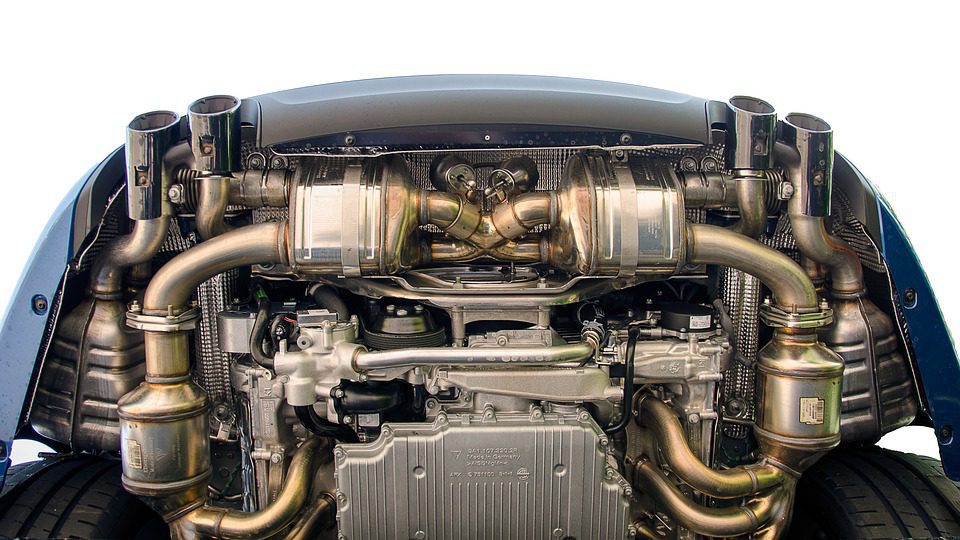Opel Corsa Engine: Efficiency and Dependability for Your Automobile
Opel Corsa Engine: Efficiency and Dependability for Your Automobile
Blog Article
Comprehensive Review of a Subcompact Car's Powertrain Capabilities
In the world of auto engineering, the powertrain of a subcompact cars and truck stands as a vital nexus where performance, development, and effectiveness converge. When inspecting the elaborate web of parts that move these automobiles onward, one reveals a symphony of design marvels waiting to be explored. From the engine's relentless quest of optimal efficiency to the transmission's smooth choreography of power circulation, every element plays a vital function in specifying the total driving experience. Past the surface lies a chest of insights waiting to be discovered, promising a deeper understanding of just how these powertrains really make out in the world of functional application.
Engine Efficiency Evaluation
In analyzing the engine performance of the subcompact car, a thorough evaluation exposes its effectiveness and power output under various driving conditions. The subcompact auto's engine, a critical element of its powertrain system, demonstrates extensive efficiency metrics. The engine's performance is notable, as it maximizes fuel intake without jeopardizing power delivery. Under regular driving conditions, the engine operates smoothly, showcasing a balance in between efficiency and fuel economic climate.
In addition, when subjected to extensive screening circumstances such as high-speed velocity or uphill climbs, the engine demonstrates resilience and responsiveness. Its power output continues to be constant, providing adequate acceleration when required. The subcompact car's engine is customized to meet the needs of city driving, where fast velocity and active maneuverability are important.
Furthermore, the engine's design integrates modern-day technologies that improve its performance attributes. Functions like turbocharging or variable valve timing contribute to boosted power delivery and torque, enhancing the general driving experience. To conclude, the engine performance of the subcompact automobile emphasizes its capacity to deliver trustworthy and efficient power output across various driving problems.
Transmission Effectiveness Analysis
Assessing the subcompact cars and truck's transmission effectiveness entails examining its efficiency in transmitting power seamlessly across different driving problems. The performance of a transmission system is important as it straight impacts the general efficiency and fuel economy of the automobile.
One common technique utilized to examine transmission performance is via dynamometer screening, where the power result from the engine is measured at the input and output shafts of the transmission. By evaluating these facets, designers can identify areas for improvement and maximize the transmission system for better overall performance and effectiveness.
Fuel Effectiveness Assessment
The examination of the subcompact auto's fuel performance involves an extensive analysis of its consumption rates under various driving conditions. Gas performance is a crucial factor in assessing the total performance and cost-effectiveness of a vehicle. By determining the quantity of gas eaten per system distance traveled, usually revealed as miles per gallon (MPG) or liters per 100 kilometers (L/100 km), the performance of the subcompact vehicle's powertrain can be identified.

Furthermore, developments in modern technology, such as hybrid systems, regenerative braking, and automated start-stop systems, have actually dramatically enhanced gas performance in modern subcompact vehicles. Manufacturers continue to enhance and innovate powertrain parts to boost gas performance while satisfying performance needs and environmental laws. Examining a subcompact car's gas effectiveness offers beneficial insights for customers seeking sustainable and economical i was reading this transportation remedies.
Acceleration and Handling Assessment
An important facet of reviewing the efficiency capacities of a subcompact vehicle exists in examining its acceleration and taking care of attributes. Velocity is vital as it figures out how promptly the car can imp source get to desired speeds, affecting overall driving experience and ability to move in numerous traffic problems. opel corsa engine. Subcompact vehicles are usually preferred for their nimbleness and dexterity, making velocity from standstill and throughout surpassing maneuvers important aspects to think about
When it concerns dealing with, a subcompact auto's ability to browse corners, keep stability at high rates, and offer a receptive guiding feeling are paramount. Tight city streets and winding roadways call for exact handling to guarantee chauffeur self-confidence and safety. Factors such as suspension adjusting, weight circulation, and tire hold play significant roles in determining a subcompact automobile's total handling expertise.

Powertrain Elements Overview
Upon delving right into the ins and outs of a subcompact automobile's performance, an extensive examination of its powertrain parts is important to grasp the automobile's mechanical foundations. The powertrain of a subcompact car commonly consists of the engine, transmission, driveshaft, differential, and axles. Understanding exactly how these components function together is crucial in evaluating a subcompact car's general performance, effectiveness, and driving characteristics.
Final Thought
In verdict, the subcompact automobile's powertrain capacities have been extensively analyzed in regards to engine efficiency, transmission effectiveness, gas efficiency, velocity, and handling. The comprehensive evaluation highlights the importance of each part collaborating flawlessly to deliver ideal efficiency. Overall, the powertrain elements of the subcompact auto have been discovered to be reliable and well-balanced, making it a reliable option for chauffeurs looking for a small and fuel-efficient lorry.
In the world of auto engineering, the powertrain of a subcompact auto stands as a vital nexus where innovation, performance, and effectiveness assemble.In evaluating the engine efficiency of the subcompact vehicle, an extensive analysis discloses its performance and power result under various driving conditions.Assessing the subcompact car's transmission efficiency involves examining its efficiency in transferring power seamlessly across various driving problems. Recognizing how these parts function together is essential in evaluating a subcompact vehicle's overall performance, efficiency, and driving characteristics.In verdict, the subcompact cars and truck's powertrain abilities have been thoroughly examined in terms of engine performance, transmission efficiency, gas velocity, effectiveness, and handling.
Report this page